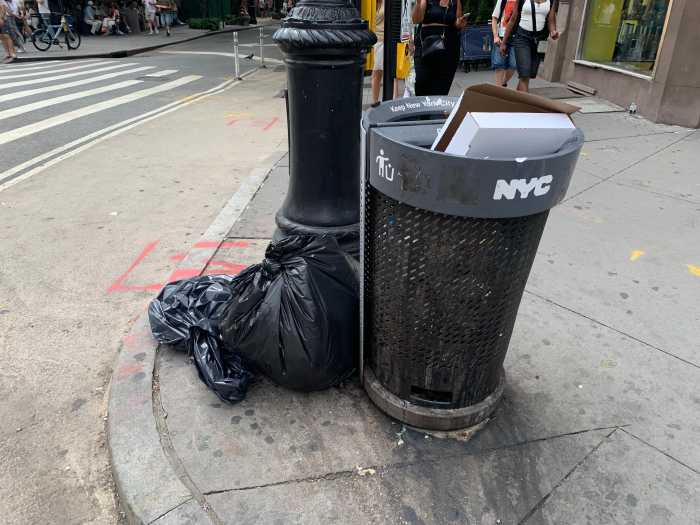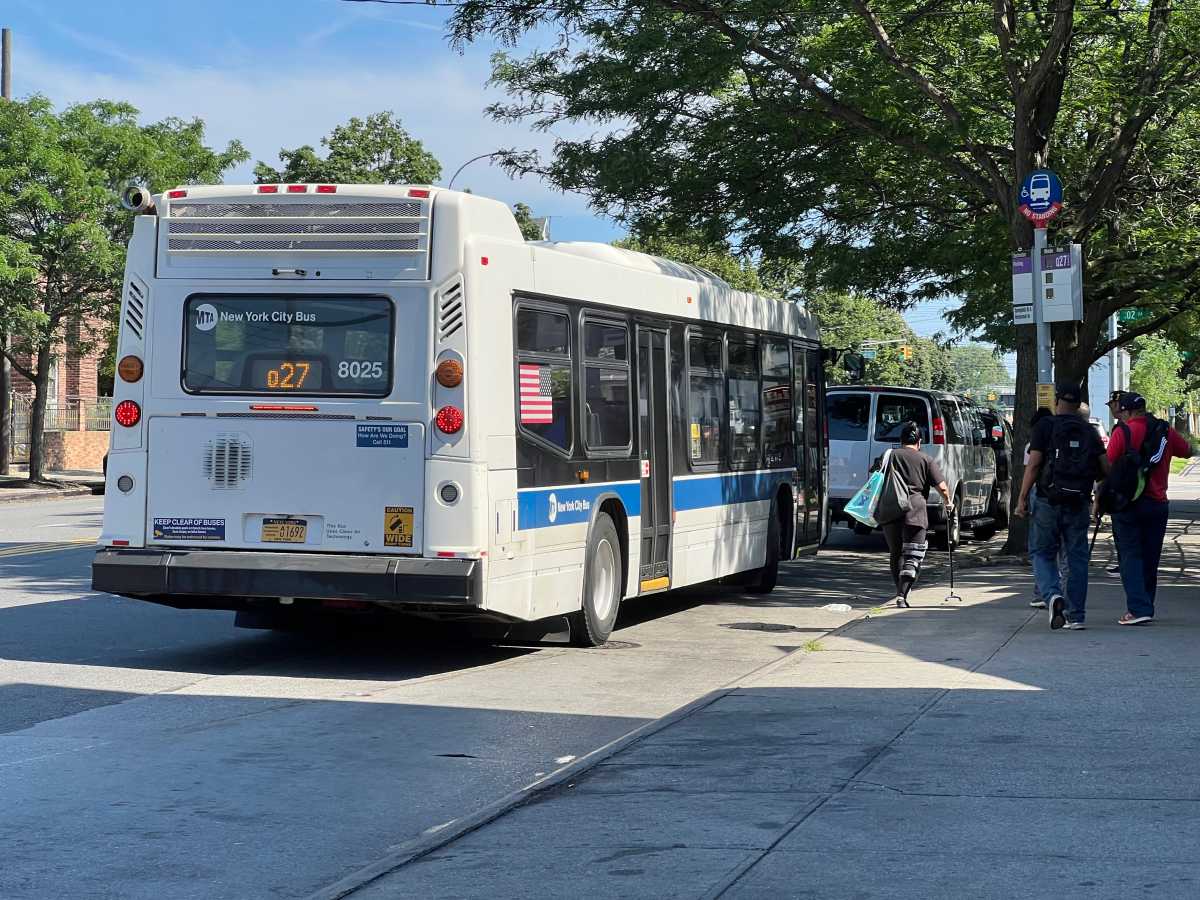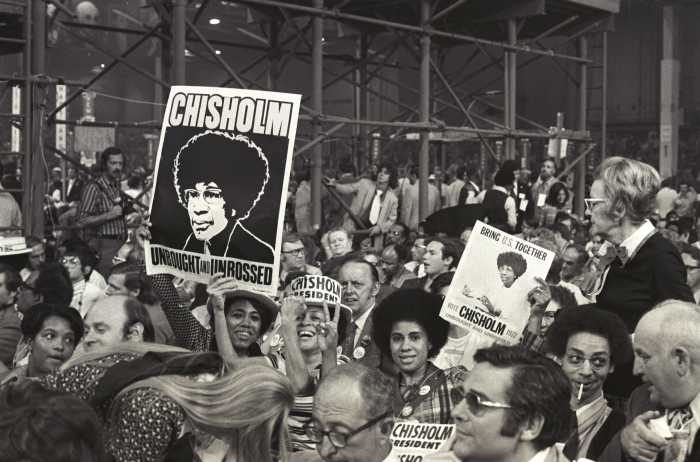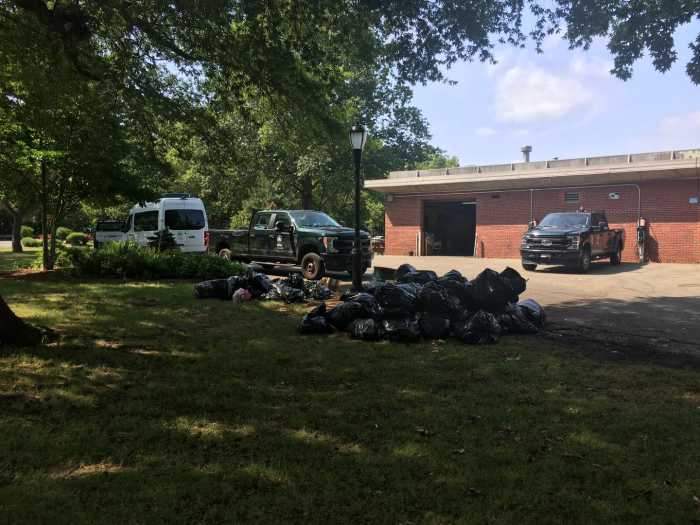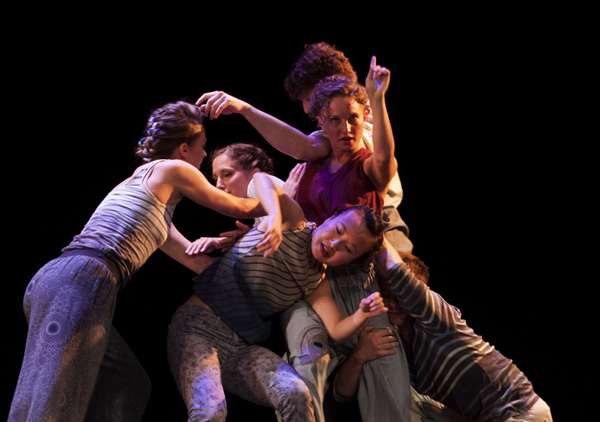
“Secrets and Seawalls,” a collaboration between the South Street Seaport Museum and Kinesis Project dance theatre, will be performed aboard the Wavertree later this month.
BY JANEL BLADOW Summer vaycay! Everyone is eager for a little fun time around the Seaport! DANCING ON WATER… Dancers who whisper, a classic shipping vessel at port, and the magnificent cityscape of Lower Manhattan as a backdrop all combine for a truly unique experience in “Secrets and Seawalls,” an evening of dance in two acts. It will be performed for three nights aboard the cargo ship Wavertree. Inspired by “storms and disruption,” the dancers “whisper across an expanse, stealing and sharing secrets in a shifting, immersive environment.” Dancer and choreographer Melissa Riker collaborates with architect Lee H. Skolnick, FAIA, to use methods of dance and architecture to explore vulnerability and power, and how they are revealed. “Secrets and Seawalls” premiered along the beach at Fort Tilden in Gateway National Park in the Rockaways in 2015. For this adaptation, dancers will mingle with guests aboard the Wavertree. The dance piece grew from Riker’s questions about the integrity of NYC’s seawalls and the impact of weather. Together, Riker and Skolnick use their individual art forms to track how vulnerable both people and structures are to weather and the sea. “Secrets and Seawalls,” a collaboration between the South Street Seaport Museum and Kinesis Project dance theatre, will be performed Thursdays, July 20 and July 27 at 7 pm and on Sunday, July 30 at 5 pm. Tickets are available at: southstreetseaportmuseum.org/secrets-and-seawalls/. FUN ART… The silly season is in full swing, so head over to Anderson Contemporary Gallery, 180 Maiden Lane, Thursday, July 13, 6–9 pm, for the opening reception of “Hooligans,” featuring artworks by three native New Yorkers. Ian Sullivan’s cityscape murals and portraits are “flooded with mischief.” Working with resin on canvas, he contrasts colorful personas against the dark reality of city life. Josh Fayer presents abstracts of nature which demonstrate “the connection between consciousness and space.” And, Victioria De Lessep displays her mixed media works that explore “the fine lines between pleasure and pain, sexuality and individuality, anger and beauty.” Pop by and dream up your own interpretation of these enterprising artists. To attend, send a note to: rsvp@andersoncontemporary.com. CLASS CONTRAST… If you haven’t stopped by the South Street Seaport Museum’s current exhibit, “Millions: Migrants and Millionaires aboard the Great Liners, 1900-1914,” you should. Curator William Roka and Art Director Rob Wilson of Bowne Printers, gave me an insider’s tour. The show is one of the first to examine, side-by-side, the startling class differences in ocean liner travel in the early 20th century. Ships such as the Titanic, Olympic, Lusitania, Mauretania, Aquitania and Imperator were the reigning queens of transatlantic travel, transporting thousands from Europe to the U.S. and back. During the first 14 years of the last century, nearly 13 million immigrants traveling in Third Class to our shores, welcomed first by SSSM’s historic vessel, the Lightship Ambrose. Meanwhile, wealthy Americans, totaling no more than 100,000 passengers each year, traveled to Europe and back in First Class, spending more than $11.5 million in today’s dollars on luxury vacations. “Eighty percent of the First Class travelers were rich Americans on vacation,” Roka said, pointing to the images of luxury steamer trunks outfitted with drawers and hangers. “Their suites would have whole rooms just for the luggage. Meanwhile the Third Class passenger had his whole life in one box.” Third Class passage would be a small, shared room costing about $1,200 in 2017 dollars, while First Class suites could have several bedrooms, sitting rooms, verandas, luggage and dressing rooms, and maids’ quarters and run to $100,000 a person or more in today’s money. And the contrast was even more clearly evident in the menus. Wilson replicated both classes’ dining lists using SSSM originals as examples. “In First Class, a new menu was printed for every meal on stiff, embossed card stock,” he said, “listing such delicacies as lobster, pate de foie gras and beef sirloin with Yorkshire pudding. The Third Class menu was a small sheet listing the day’s three meals and tea.” Breakfast included Quaker Oats and smoked herring, dinner could include Corned beef and Cabbage while supper was gruel, cheese and biscuits. “They did have to have nutritious meals to make it through Ellis Island,” Wilson said. “And 92 percent made it through immigration.” This small but historic exhibit is definitely worth a visit. It runs through January 7, 2018. Buy tickets online at www.southstreetseaportmuseum.org/ or in person at 12 Fulton St.
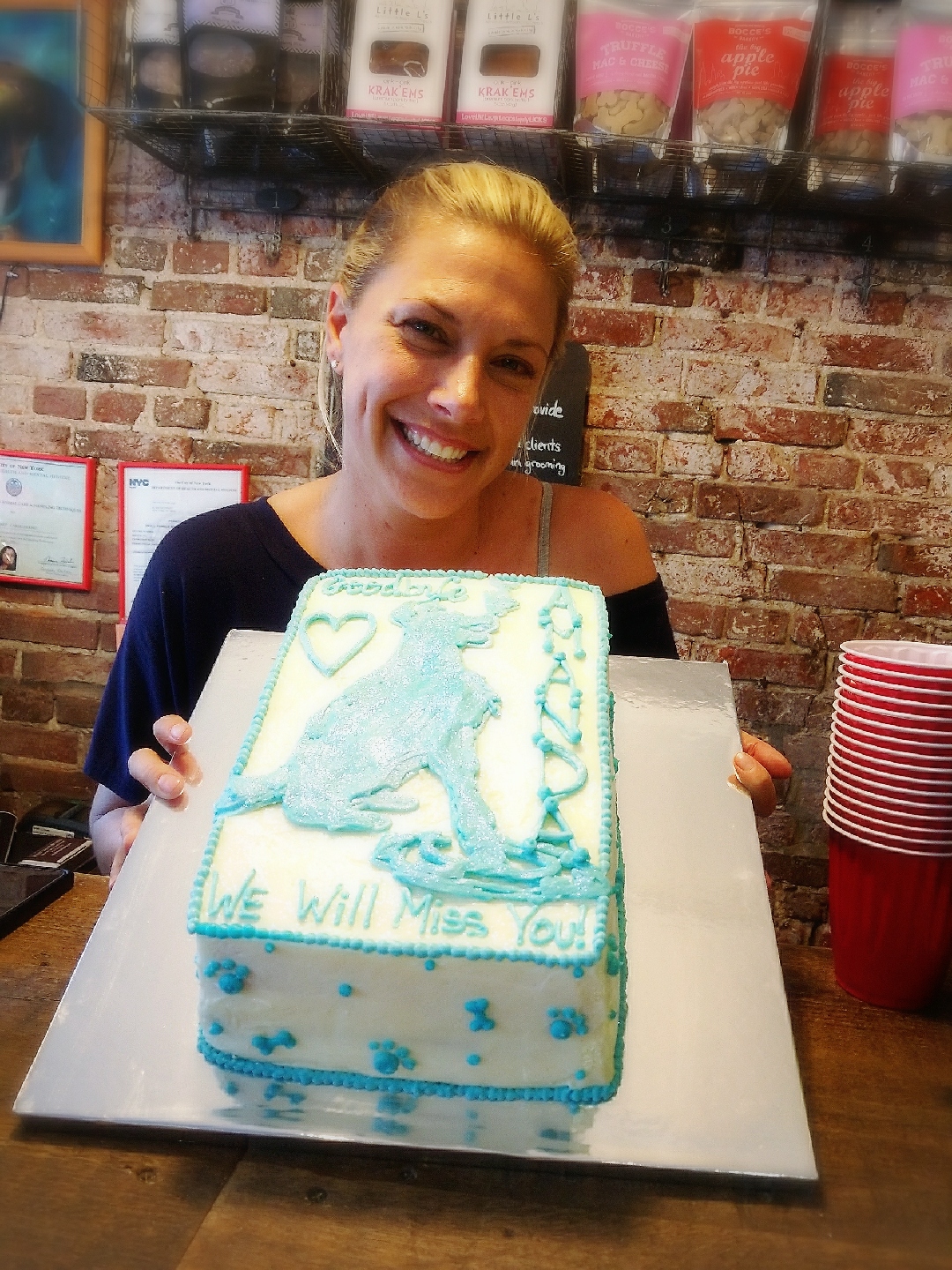
Amanda Zink of Salty Paw and her family are packing up and moving to Florida.
SAILING AWAY… With the end of the school year, Rob and Amanda Zink and their two sons packed up their loft and said their goodbyes to their Seaport friends. Rob retired after 31 years with the NYPD and 19 with the Patrolman’s Benevolent Association. Amanda passed the keys and leashes at Salty Paw to her head groomer, and the Zinks shuttled off to Maine for five weeks of summer fun at their lake house. Come the end of summer they will take one-way flights to West Palm Beach and set up a new home in Jupiter, Florida. “It’s time,” Amanda told Seaport Report. “The kids want that backyard. I want sunny weather and the ocean, and my husband wants a simpler life.” Amanda first moved to the Seaport in 1996 as a 22-year old intern at MTV. Over the years she worked extensively with Community Board 1, was one of the founding members of the Old Seaport Alliance following Hurricane Sandy, and was an asset to the Peck Slip School PTA and Taste of the Seaport. And fear not, her influence will continue with her little dog shop that could, The Salty Paw (38 Peck Slip). May Pilan, head groomer for the last eight years, will keep the lights on, the baths bubbling, and the fur from flying. “I’m gutted about leaving a place so special as the Seaport, where I have spent my entire adult life, but excited to write the next chapter,” said Amanda. “I feel proud of all I accomplished here, the organizations I was part of, and the dear friends I made that helped me make my mark here.” HIP HIP HOORAY… Just a little shout out to NYC Councilmember Margaret Chin and Manhattan Borough President Gale Brewer! They announced two new grants for ship maintenance and educational programs for the South Street Seaport Museum. The Fiscal Year 2018 capital budget includes $500,000 for repairs to the Lightship Ambrose, and $20,000 is set aside for a Cultural After-School Adventure (CASA) program for Downtown kids.



